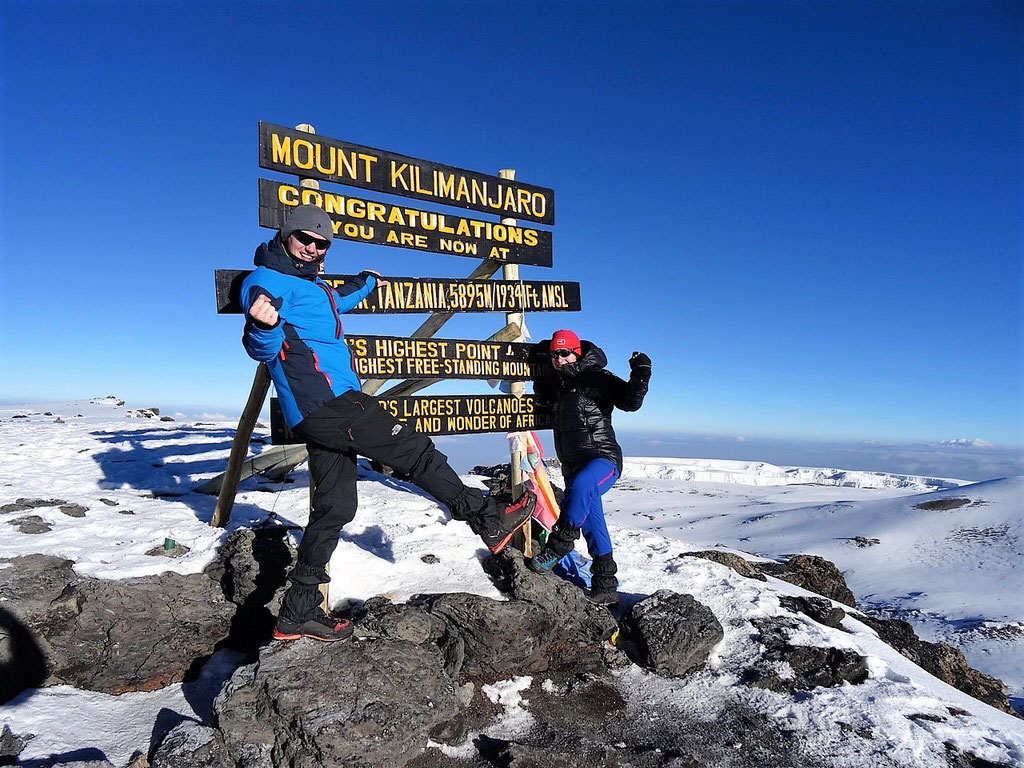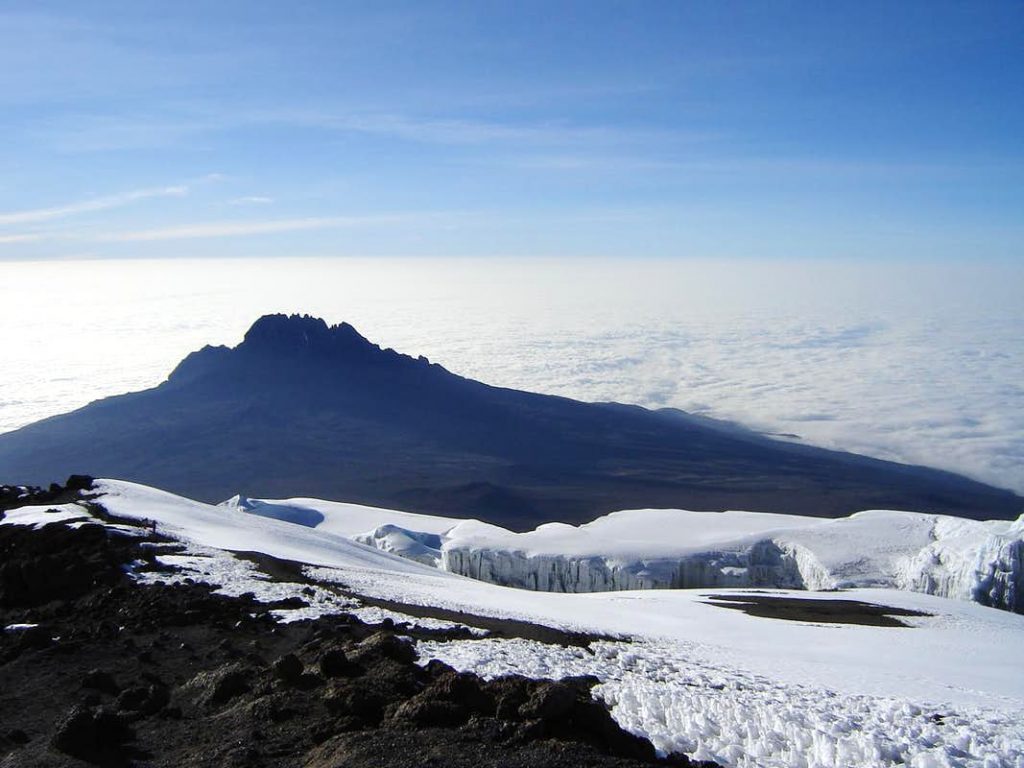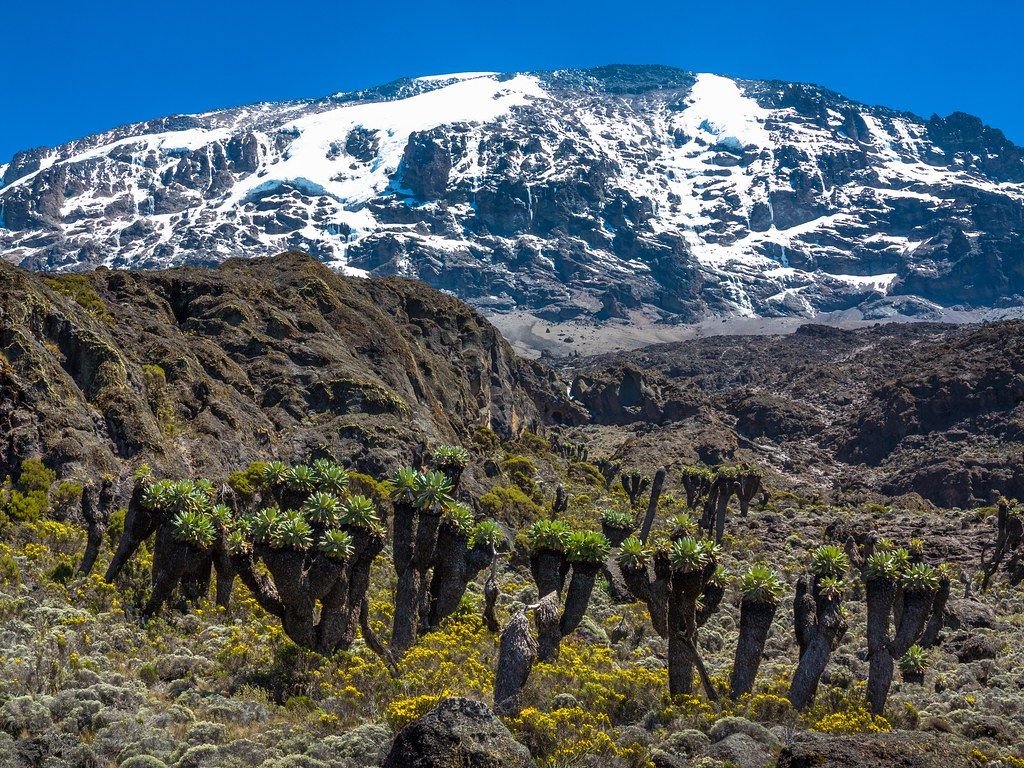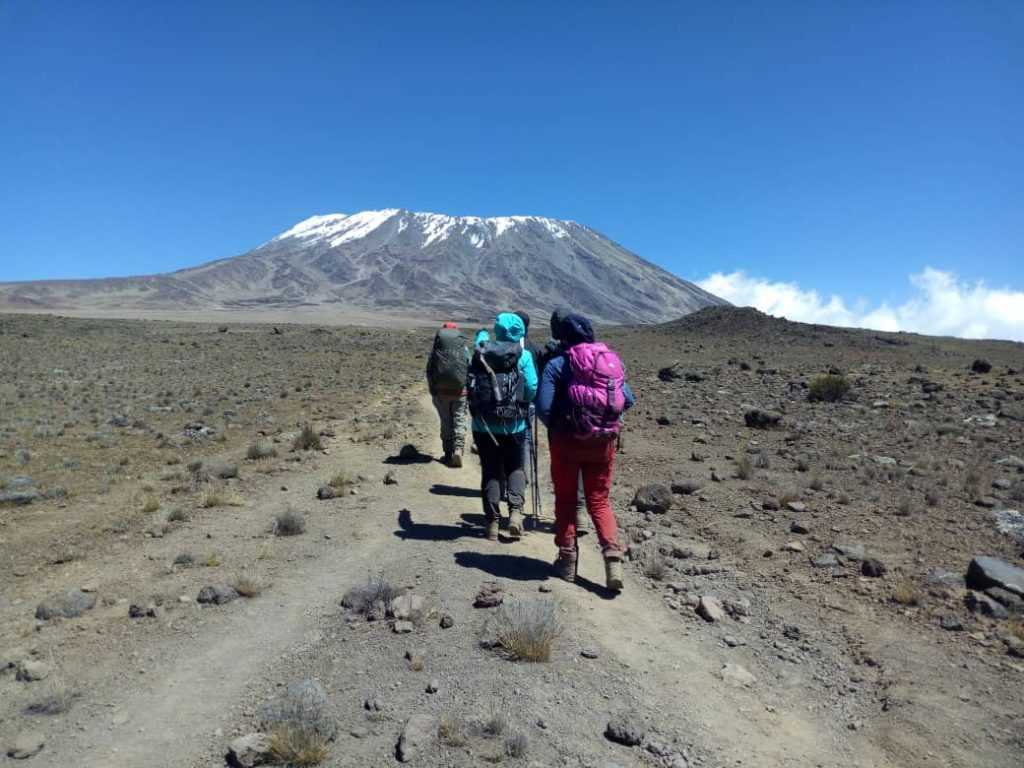Mount Kilimanjaro
Mount Kilimanjaro is the highest free-standing mountain in the world and one of the Seven Summits. The mountain stands tall at 5,895 meters (19,341 feet) at the summit of Uhuru Point. To reach the summit, you will trek through 5 different climate zones, from the tropical rainforest to the arctic zone, where the glaciers are found. The mountain is located near Moshi, Tanzania.
No mountaineering experience is needed to summit this mountain, allowing a unique opportunity for people to have this extraordinary experience of standing on the highest free-standing mountain in the world. Although no mountaineering experience is needed to conquer the mountain, being able to summit successfully depends highly on the amount of time spent on the mountain allowing your body to acclimatize to the drastic change in altitude, and you will need at least a basic level of fitness to be able to trek for 6-9 days. This is why the longer routes have a more successful summit rate.
We follow the KPAP guidelines to ensure fair treatment of our porters. The porters play an essential role in your successful summit. As a company, we are focused on ensuring all our porters are respected for their essential roles and treated fairly.
Kilimanjaro Climate Zones
Mount Kilimanjaro has five different climate zones:
Cultivation / Farmlands zone
Elevation: 800m -1,800m (2,600ft – 6,000ft)
On your way to the gates of Mount Kilimanjaro National Park, you will drive through this zone and be able to view these farms and villages, as the mountain has ideal conditions for farming. Many of your guides, porters, and cooks live or grew up in these villages.
Rainforest zone
Elevation: 1,800m-2,800m (6,000ft – 9,000ft) Temperature: daytime: 20°C to 30°C; night: 5°C to 15°C
The rainforest is warm, humid, and lush green all year round, and it will be a beautiful trek through the rich forests of the mountain. Many species live within the rainforest, including frequently seen blue and colobus monkeys.
Heather and Moorland zone
Elevation: 2,800m-4,000m (9,000ft – 13,000ft) Temperature: daytime: 10°C to 20°C; night: 0 to 10°C
The rainforest will quickly reach the Mooreland zone, where you trek through giant heathers, wild grasses, and rocky terrain. You will now be above the cloud line, so remember your sunscreen for the daytime and watch the stars with clear skies at night.
Alpine Desert zone
Elevation: 4,000m-5,000m (13,000ft -16,000ft ) Temperature: daytime: 0 to -5°C; night: -10°C to -5°C
Once in this mountain zone, you will only find only a few plants growing. This rocky landscape is cold and dry and inhospitable to most plant life. You may trek through fields of volcanic rock and have the chance to see the glaciers on the side of Kibo. The weather will go from frost on the tents when you wake up to harsh sunshine in the daytime.
Arctic Zone
Elevation: 5,000m-5,895m (16,000ft – 19,340 ft) Temperature: daytime: -10°C to -1°C; night: -15°C to -25°C
Near the summit, this is the final climate zone on Mount Kilimanjaro. You will trek through loose scree, ice and snow on your way to Uhuru Peak. You will be able to view the glaciers that are found on the top of Kilimanjaro here.
Safety
Your safety while climbing the mountain is our main priority. We want to ensure your climb is not only enjoyable but safe. Due to the high altitude of Mount Kilimanjaro, the most significant safety concern on the mountain is altitude sickness, which, if not treated, will become life-threatening, and the only way to treat it is by descending to a lower elevation.
The biggest risk to getting altitude sickness is ascending too quickly, inadequate fluid intake, and not recognizing symptoms early enough. Pay attention to your body, and if you are feeling any symptoms of altitude sickness, it is essential to tell your guide. They can assess the difference between mild and severe symptoms and make decisions to keep you safe. Our guides are well-trained to prevent, recognize, and treat altitude sickness.
Part of our safety protocols include
- Complete health checks twice a day, including pulse and oxygen saturation monitoring with a pulse oximeter
- The certificated mountain guides are highly trained in altitude sickness to recognize it early and use the “Lake Lousie scoring system” to determine symptoms and severity of your symptoms
- Carrying oxygen cylinders that can be used for emergencies
- Complete first aid medical kit
- Durable equipment that can withstand harsh mountain conditions, such as weatherproof tents
Tips to better acclimatize
- Taking a longer route up the mountain
- Drink at least 4L of water throughout the day
- Avoid caffeine and alcohol during the trek
- Walking slower than your normal pace
- You can speak to your pharmacist/ doctor about the use of Diamox medication to assist with acclimatization
What is Included
- Airport pick up and drop off
- 1 night before the climb and 1-night accommodation after climbing in Moshi
- Transportation to and from the park gate
- All park fees, camping fees, and mandatory rescue fees
- All meals and drinks while on the mountain
- Professional certified English-speaking mountain guide, porters, and chef
- Sleeping tent and foam sleeping pad
- All group equipment (dining tent, tables, chairs, cutlery, dishes)
- Oxygen cylinders and oximeters
- Complete medical kits that guides carry
Not included
- International flights
- Tanzania tourist visa on arrival
- Sleeping bag and personal items
- Personal equipment (clothing, hiking boots, climbing gear, water bottle, sleeping bag)
- Travel and medical insurance (recommend getting travel insurance that includes high altitude)
- Tips/ gratuities for your mountains guides and porters
- Lunch and dinner in Moshi, before and after the ascent
A life time Kilimanjaro experience
At Mahiri African Tours, we want you to have a once-in-a-lifetime experience climbing to the summit of Mount Kilimanjaro. To do this we provide trained and friendly guides, excellent chefs, fairly treated porters, and daily health checks for safety. We offer high-quality climbs at a reasonable price and prioritize your safety on the mountain.
Pricing for the climbs
See details on each climb and price per participant. Prices of the climb are in USD currency.
All of the prices include accommodations for 1 night before and after the trek which are for moderate level accommodation, if wanting a higher-end or a budget alternative please let us know.
Contact us directly for any questions or to book your climb today.
*all elevations and distances are an estimate




